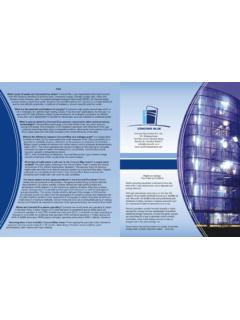Transcription of USDA/ National Organic Program (NOP) - Tersano
1 USDA/ National Organic Program (NOP). Nonagricultural (nonorganic) substances allowed as ingredients in or on processed products labeled as " Organic " or "made with Organic (specified ingredients or food groups(s)).". The following nonagricultural substances may be used as ingredients in or on processed products labeled as " Organic " or "made with Organic (specified ingredients or food group(s))" only in accordance with any restrictions specified in this section. (a) Nonsynthetics allowed: Acids (Alginic; Citric - produced by microbial fermentation of carbohydrate substances; and Lactic). Agar-agar. Animal enzymes (Rennet - animals derived; Catalase bovine liver; Animal lipase.)
2 Pancreatin; Pepsin; and Trypsin). Bentonite. Calcium carbonate. Calcium chloride. Calcium sulfate - mined. Carageenan. Colors, nonsynthetic sources only. Dairy cultures. Diatomaceous earth - food filtering aid only. Enzymes--must be derived from edible, nontoxic plants, nonpathogenic fungi, or nonpathogenic bacteria. Flavors, nonsynthetic sources only and must not be produced using synthetic solvents and carrier systems or any artificial preservative. Glucono delta-lactone production by the oxidation of D-glucose with bromine water is prohibited. Kaolin. Magnesium sulfate, nonsynthetic sources only. Nitrogen - oil-free grades. Oxygen--oil-free grades. Perlite--for use only as a filter aid in food processing.
3 Potassium chloride. Potassium iodide. Sodium bicarbonate. Sodium carbonate. Tartaric acid. Waxes - nonsynthetic (Carnauba wax; and Wood resin). Yeast - nonsynthetic, growth on petrochemical substrate and sulfite waste liquor is prohibited (Autolysate; Bakers; Brewers; Nutritional; and Smoked - nonsynthetic smoke flavoring process must be documented). (b) Synthetics allowed: Alginates. Ammonium bicarbonate - for use only as a leavening agent. Ammonium carbonate - for use only as a leavening agent. Ascorbic acid. Calcium citrate. Calcium hydroxide. Calcium phosphates (monobasic, dibasic, and tribasic). Carbon dioxide. Cellulose - for use in regenerative casings, as an anti-caking agent (non-chlorine bleached) and filtering aid.
4 Chlorine materials - disinfecting and sanitizing food contact surfaces, Except, That, residual chlorine levels in the water shall not exceed the maximum residual disinfectant limit under the Safe Drinking Water Act (Calcium hypochlorite; Chlorine dioxide; and Sodium hypochlorite). Ethylene - allowed for postharvest ripening of tropical fruit and degreening of citrus. Ferrous sulfate - for iron enrichment or fortification of foods when required by regulation or recommended (independent organization). Glycerides (mono and di) - for use only in drum drying of food. Glycerin - produced by hydrolysis of fats and oils. Hydrogen peroxide. Lecithin - bleached. Magnesium carbonate - for use only in agricultural products labeled "made with Organic (specified ingredients or food group(s))," prohibited in agricultural products labeled " Organic .
5 ". Magnesium chloride - derived from sea water. Magnesium stearate - for use only in agricultural products labeled "made with Organic (specified ingredients or food group(s))," prohibited in agricultural products labeled " Organic .". Nutrient vitamins and minerals, in accordance with 21 CFR , Nutritional Quality Guidelines For Foods. Ozone. Pectin (low-methoxy). Phosphoric acid - cleaning of food-contact surfaces and equipment only. Potassium acid tartrate. Potassium tartrate made from tartaric acid. Potassium carbonate. Potassium citrate. Potassium hydroxide - prohibited for use in lye peeling of fruits and vegetables except when used for peeling peaches during the Individually Quick Frozen (IQF).
6 Production process. Potassium iodide - for use only in agricultural products labeled "made with Organic (specified ingredients or food group(s))," prohibited in agricultural products labeled " Organic .". Potassium phosphate - for use only in agricultural products labeled "made with Organic (specified ingredients or food group(s))," prohibited in agricultural products labeled " Organic .". Silicon dioxide. Sodium citrate. Sodium hydroxide - prohibited for use in lye peeling of fruits and vegetables. Sodium phosphates - for use only in dairy foods. Sulfur dioxide - for use only in wine labeled "made with Organic grapes," Provided, That, total sulfite concentration does not exceed 100 ppm.
7 Tartaric acid. Tocopherols - derived from vegetable oil when rosemary extracts are not a suitable alternative. Xanthan gum. (c)-(z) [Reserved]. [65 FR 80657, Dec. 21, 2000, as amended at 68 FR 61993, Oct. 31, 2003, and 68 FR. 62217, Nov 3, 2003].









